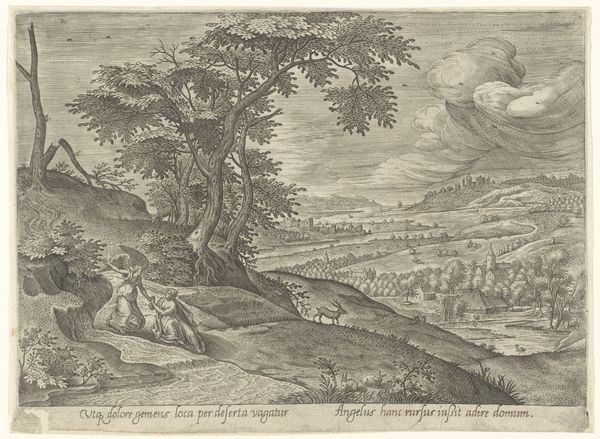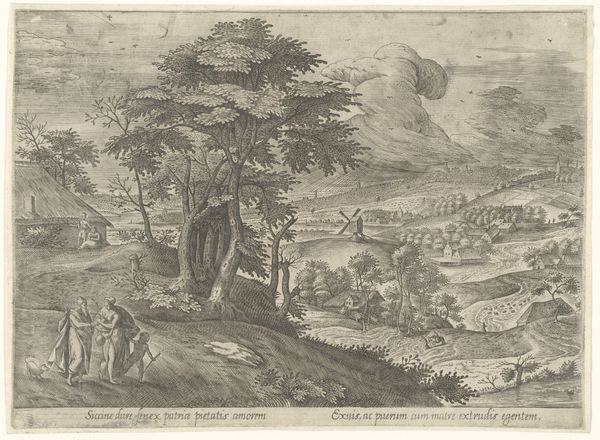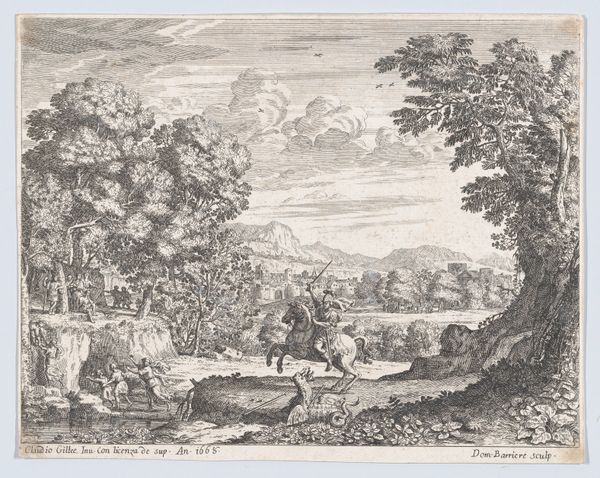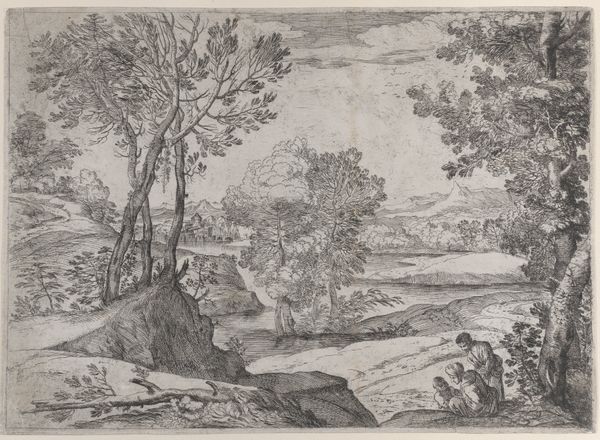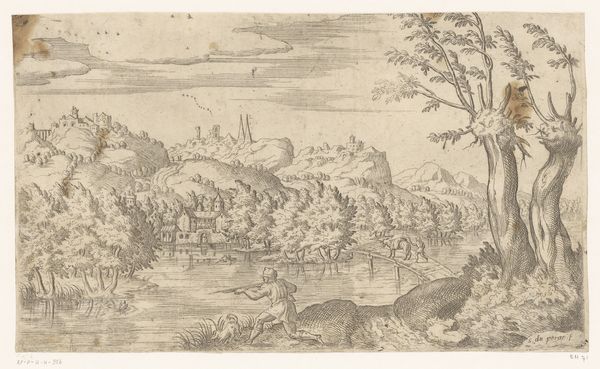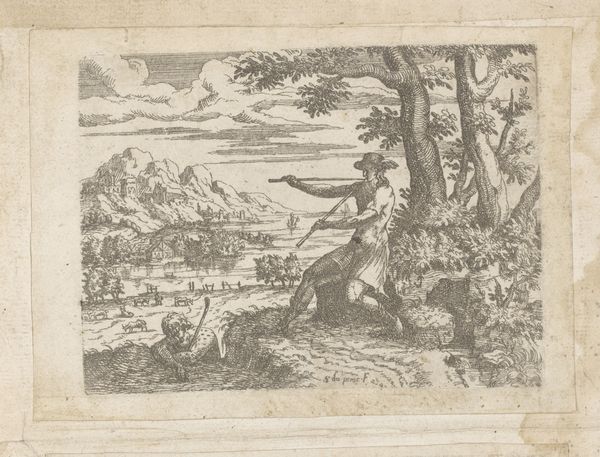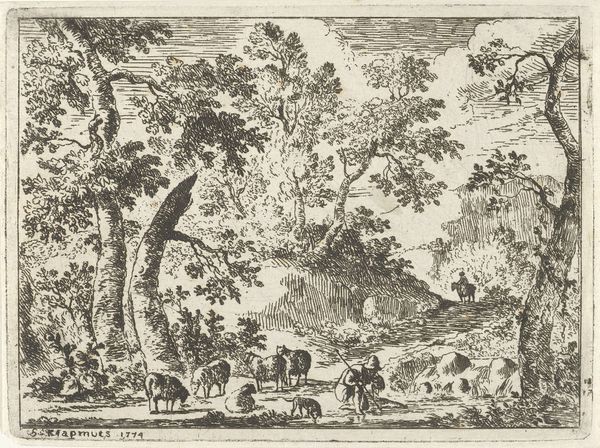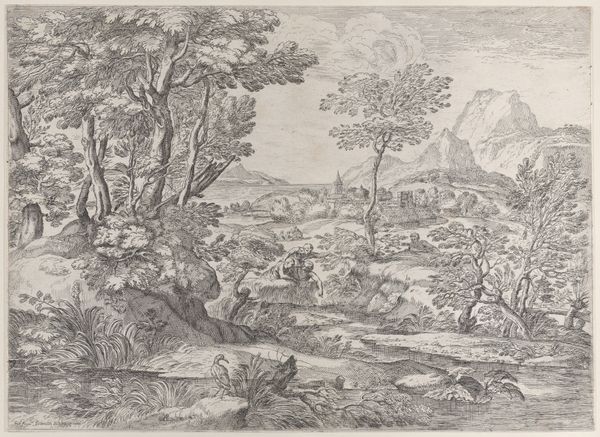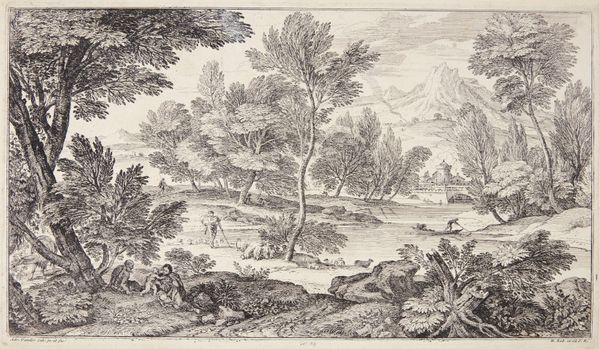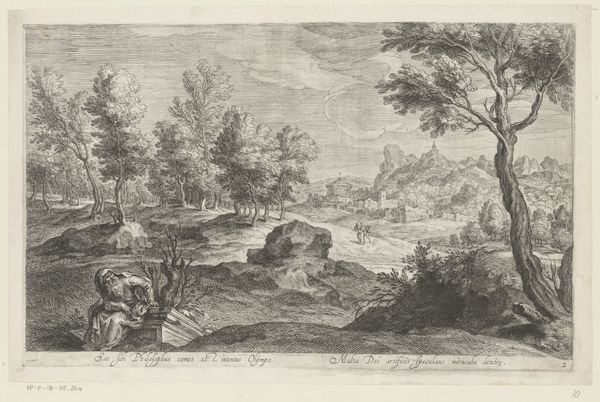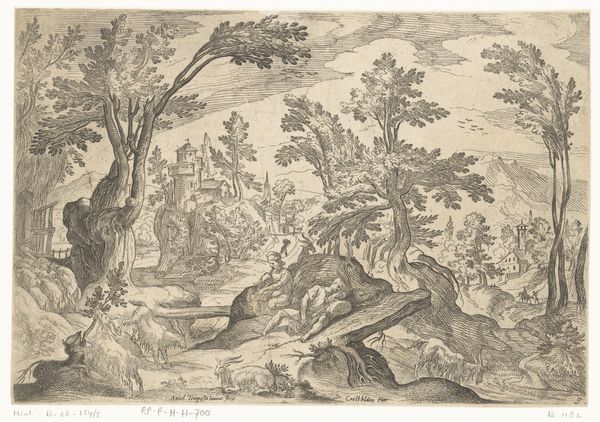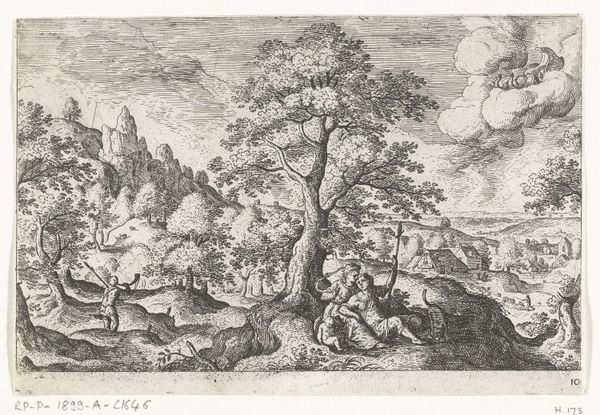
drawing, print, etching, engraving
#
tree
#
drawing
# print
#
pen sketch
#
etching
#
landscape
#
form
#
men
#
line
#
genre-painting
#
northern-renaissance
#
engraving
Dimensions: Sheet: 8 15/16 x 12 13/16 in. (22.7 x 32.6 cm)
Copyright: Public Domain
Curator: Crispijn de Passe the Elder created this print, an engraving titled "Path over a Valley." Though his activity spanned from 1564 to 1637, this work really transports us back to the Northern Renaissance. What stands out to you immediately? Editor: There’s an immediate contrast between the figures’ earthly toil and the expansive landscape—like a reminder of the social strata inherent even in what seems like an untouched natural scene. It evokes feelings of serene nature scenes mixed with heavy social implications. Curator: Precisely. Consider the setting: we see figures on horseback and on foot traversing a valley, and these figures populate a space made increasingly accessible by emerging roads and trade routes. The very lines etched into this work reflect an evolving relationship between humanity and its environment. The growth of villages into prominent cities in the distance really makes it a statement piece on humanity's role on earth. Editor: It’s interesting to think about who this image was for. Were the realities of the laboring class and this type of labor meant to be consumed as an aesthetic or picturesque ideal by those who benefitted most from it? There is something exploitative about that act of consumption. Curator: That is a really important point to note about this type of genre painting of the period. Consider the medium of printmaking. It democratized imagery. "Path over a Valley" isn't just a picture, it's a mass-produced object that was once readily available to a growing urban class. So, while the realities might have been grim for those depicted in the print, ownership of such images provided status and also dictated socio-political attitudes to the buyers. Editor: Yes, that tension—between accessibility and the reinforcement of existing hierarchies is crucial. Seeing art that, on the surface, seems pastoral, we still need to consider who had access to nature, to leisure, to beauty. Curator: Absolutely. And by asking those tough questions, we confront not only the past but also how these dynamics continue to echo in contemporary art and culture. I find that perspective incredibly valuable in examining this landscape and genre work of art from centuries ago. Editor: It definitely pushes us to question the narratives we often take for granted. It makes you want to keep advocating for those stories in front of and behind the works, to expose the inequities so often hidden in plain sight.
Comments
No comments
Be the first to comment and join the conversation on the ultimate creative platform.
